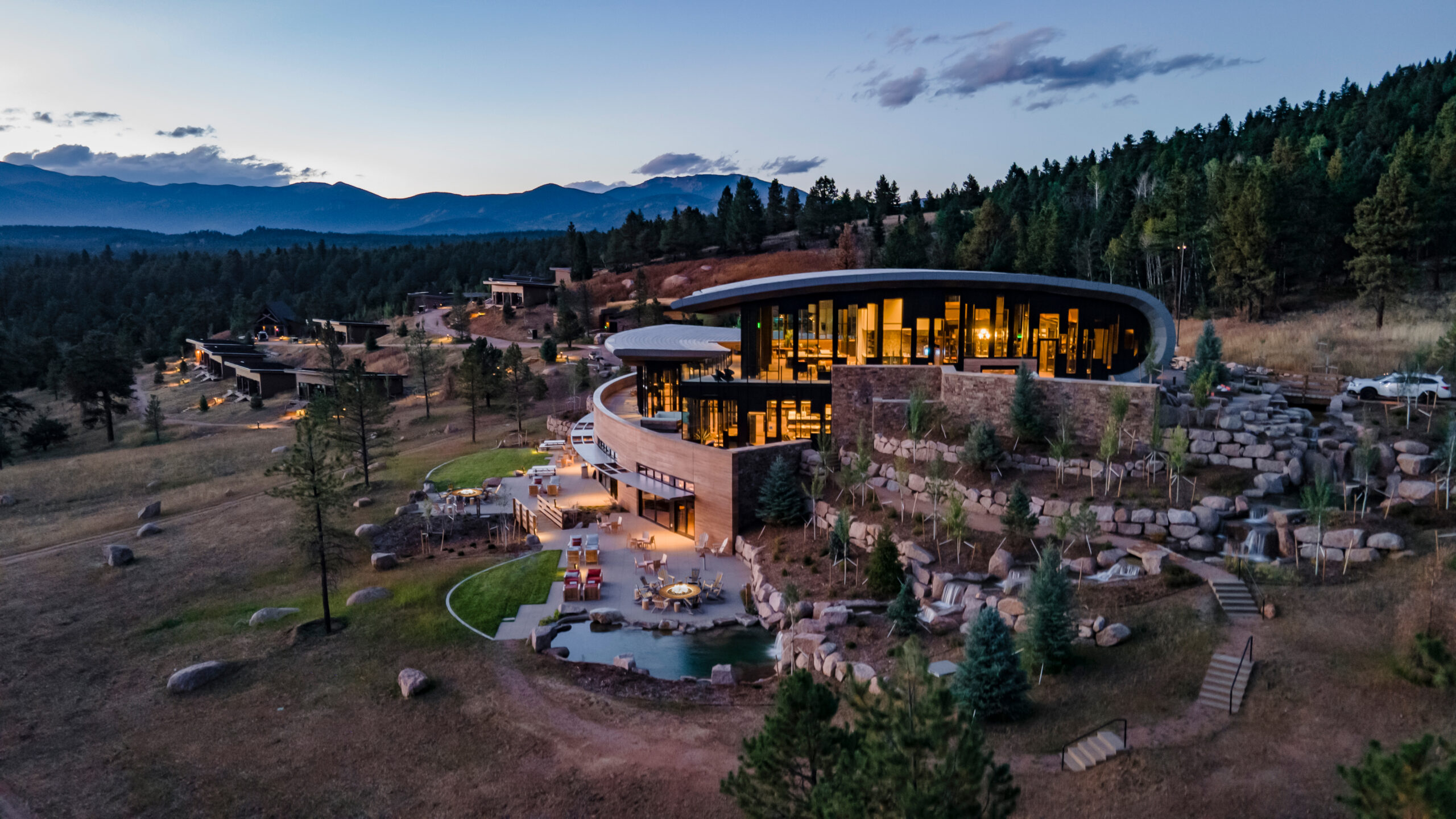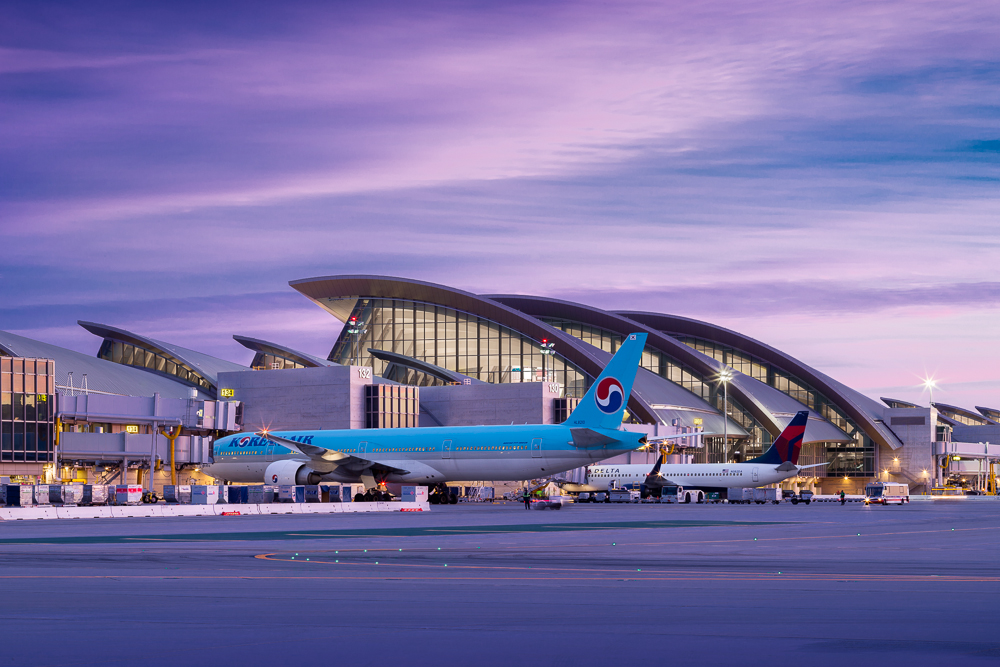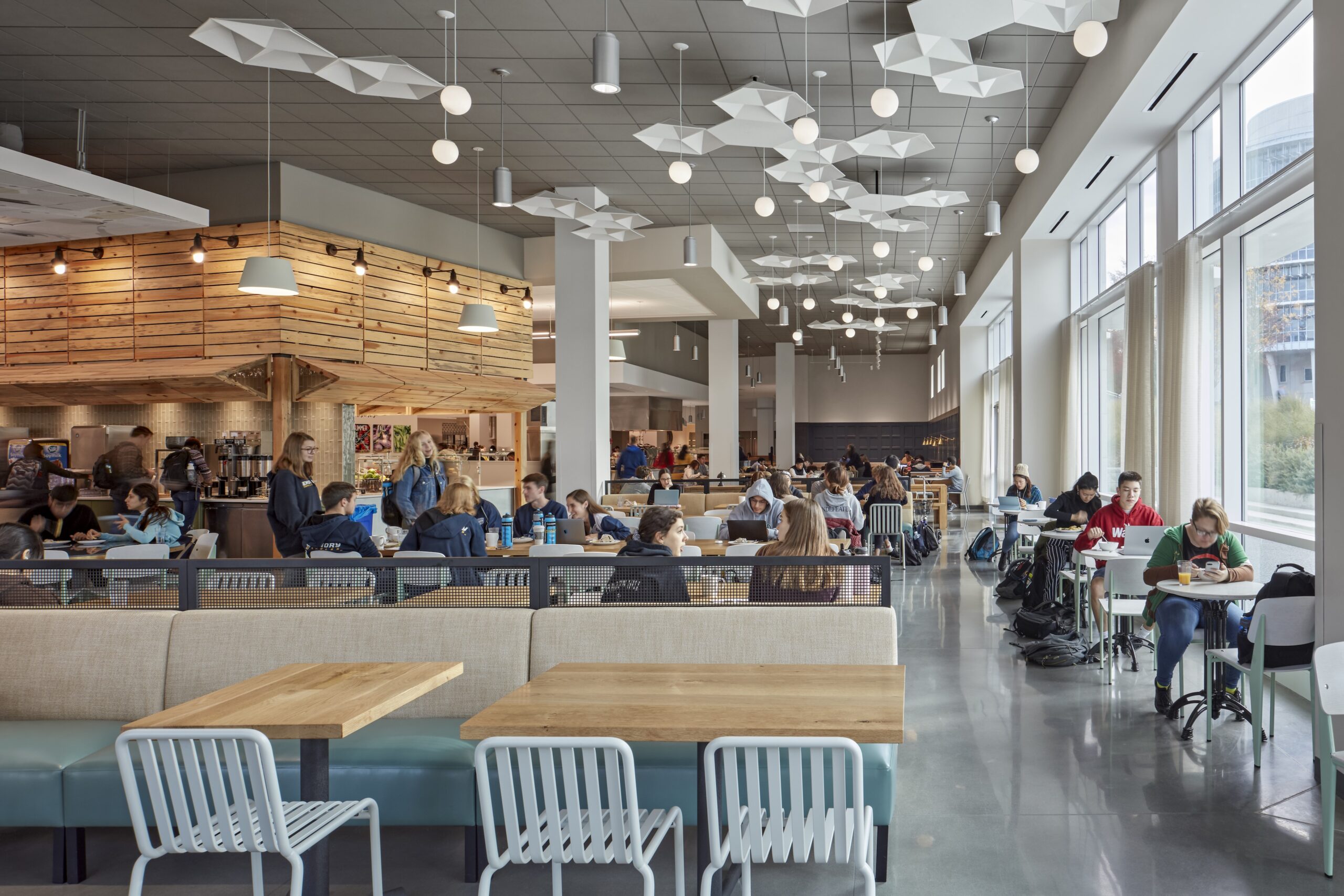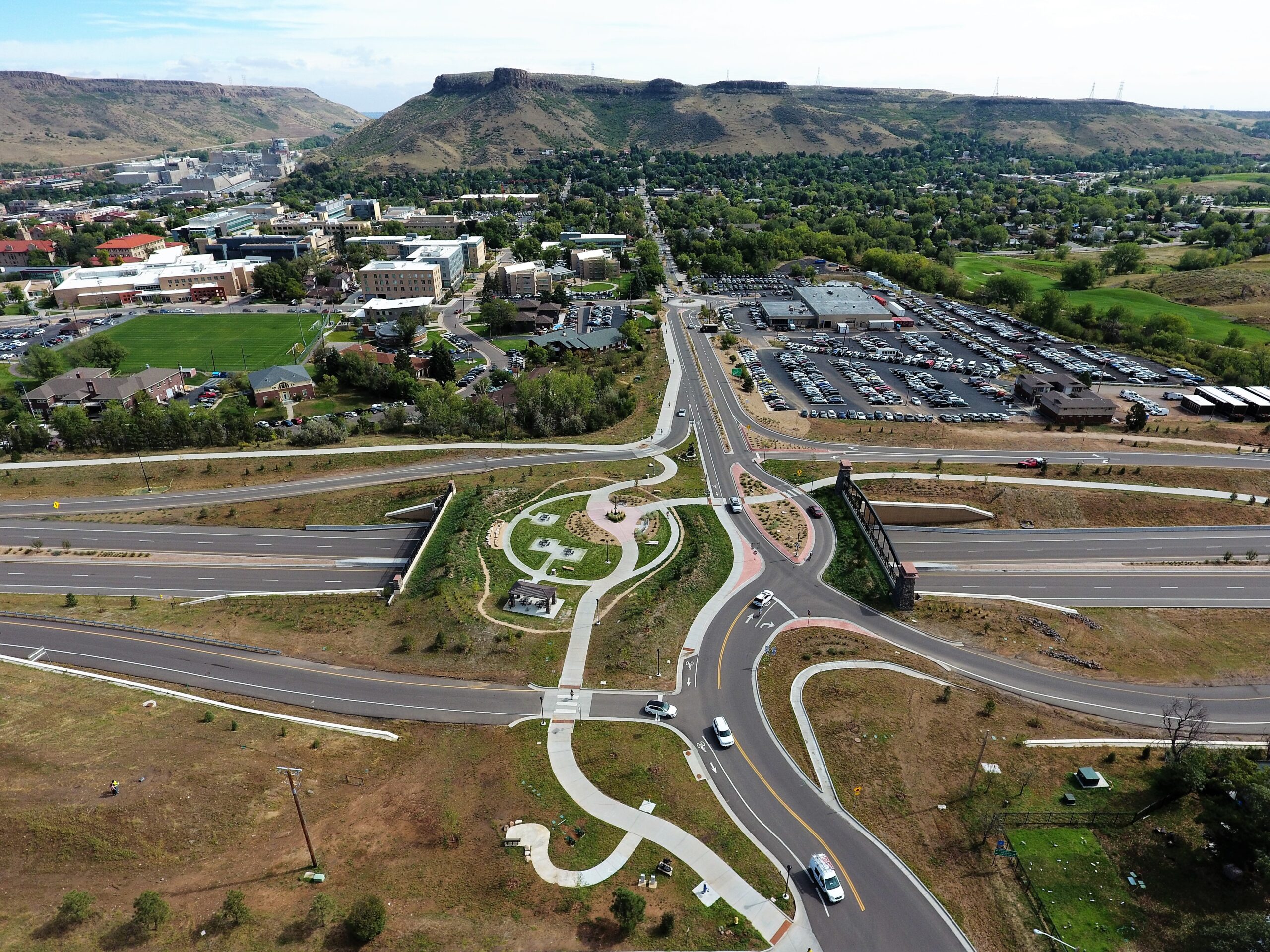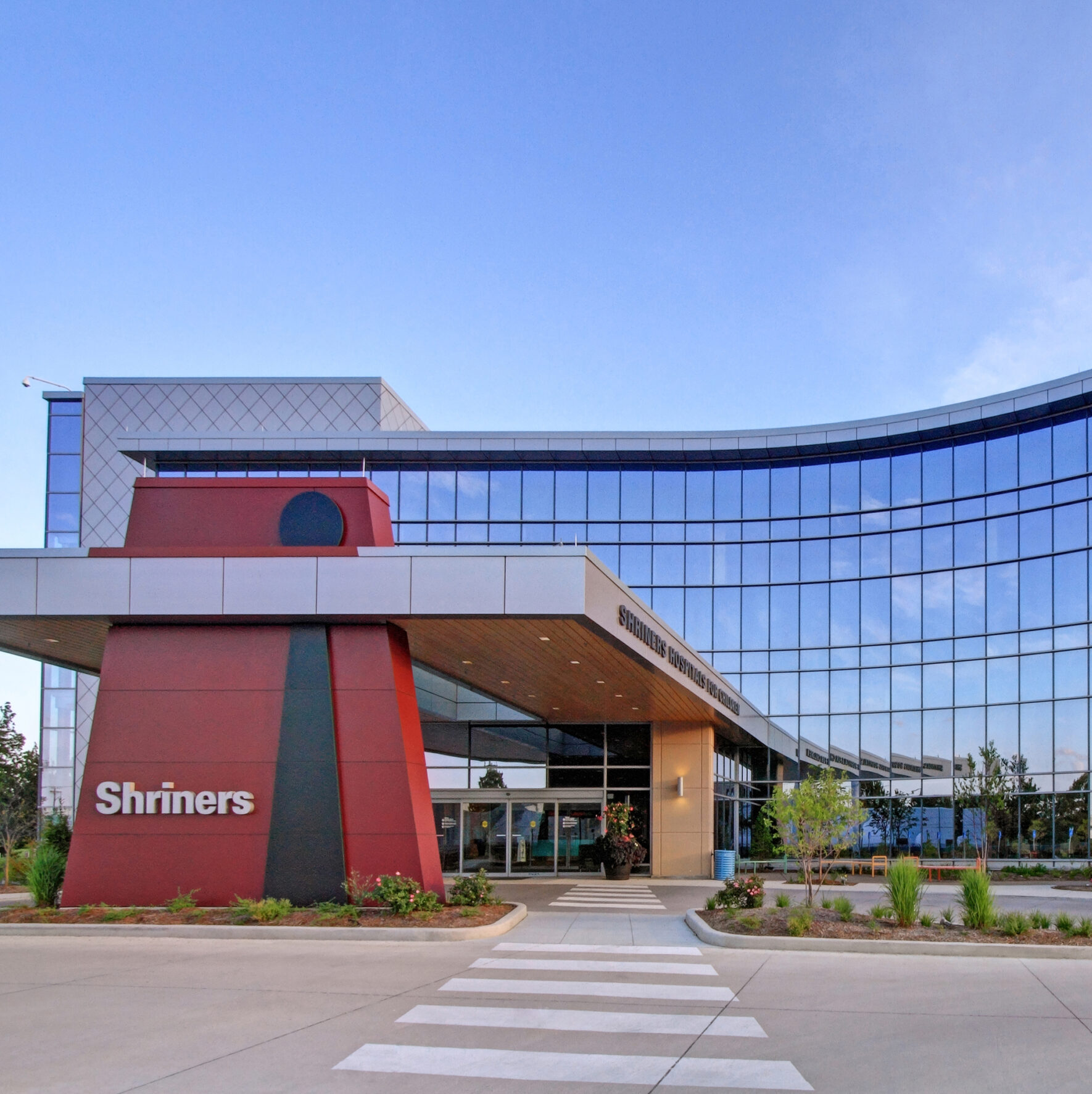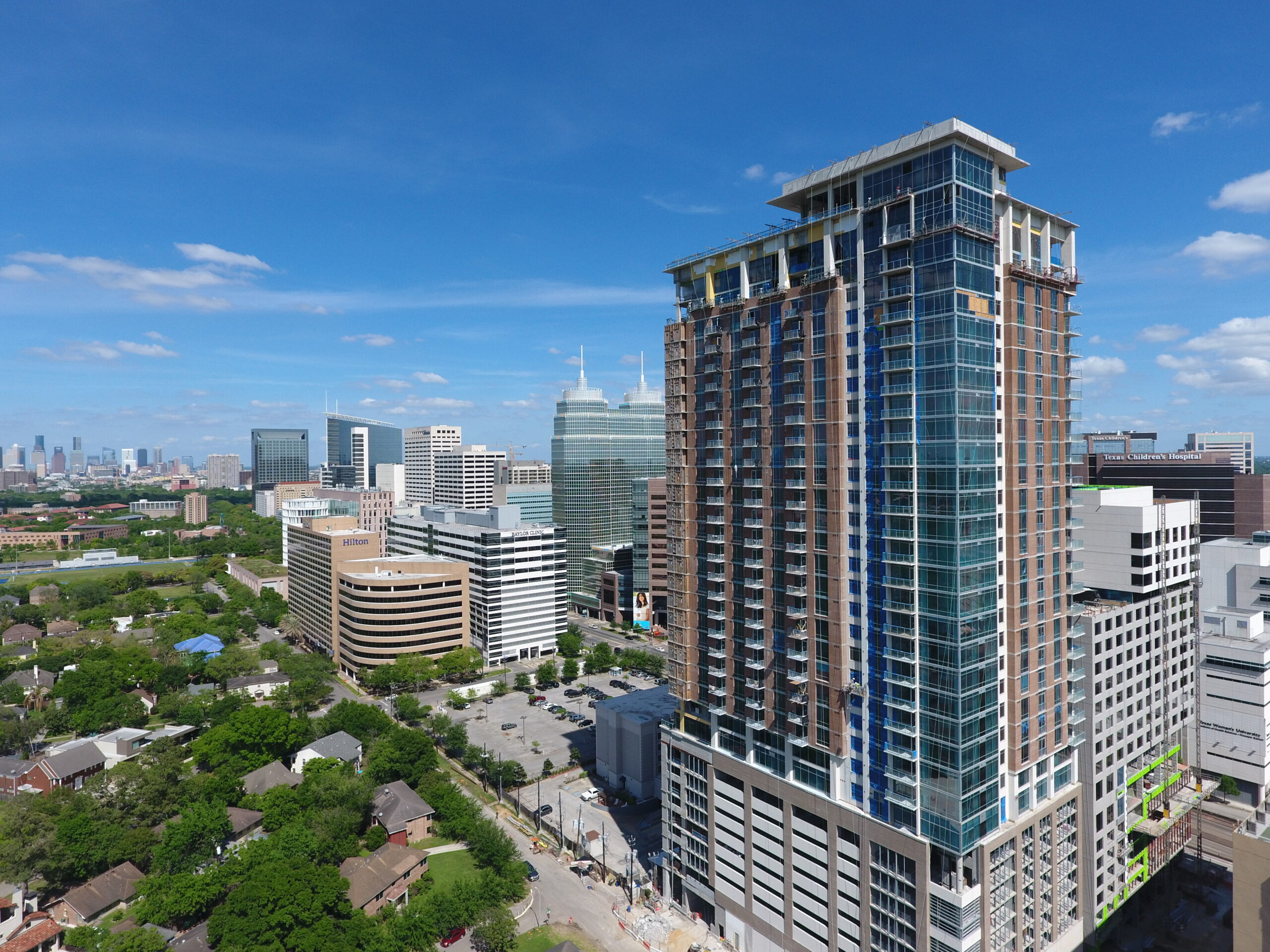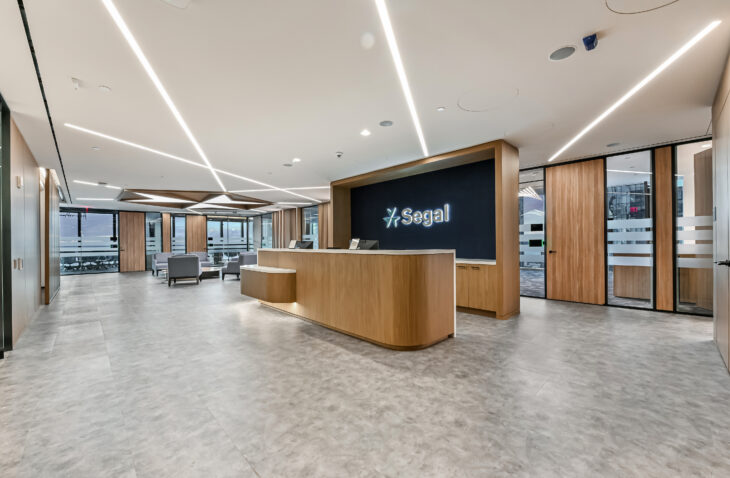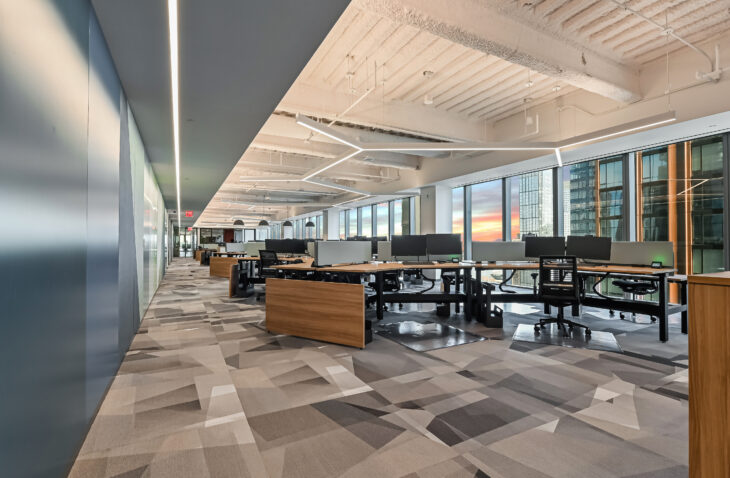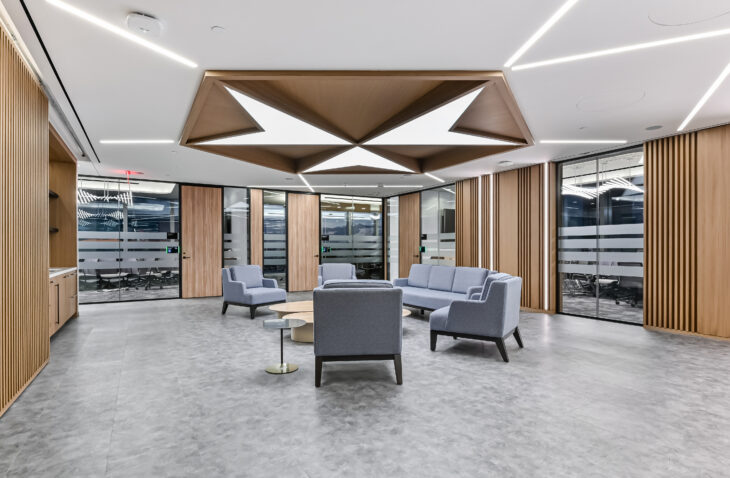New Headquarters Fit-Out
The project: The Segal Group’s new 54,400-sf headquarters in the newly constructed Spiral Building in New York’s Hudson Yards represents a significant departure from the firm’s traditional office model to a future-forward and amenity-rich space for today’s remote workforce. Amenities include hoteling offices, open collaboration zones reservable by Wi-Fi scheduling systems, private phone rooms, and high-tech lockers accessible by phone tap.
The goal: Replace Segal’s previous 200,000-square-foot location with a smarter, more agile environment that meets the needs of a predominantly remote workforce while providing a central, amenity-rich hub for in-person meetings, client engagements, and team collaboration.
Design approach: The project experienced delays due to unforeseen existing conditions which were addressed collaboratively by the owner, architect, engineering, and construction team to mitigate the risk to the project schedule.
Project features: Designed to meet or exceed current building codes, the office integrates numerous sustainable and energy-efficient features. These include automated daylight-responsive lighting controls, a zoned HVAC system, and a sophisticated building management system that minimizes energy use during off-peak hours. Special attention was also given to acoustics and soundproofing to meet Segal’s confidentiality needs.
Challenge: Accelerated schedule due to the expiration of Segal’s previous lease. Solution: To meet the tight timeline, daily coordination was essential between the design team, general contractor, building management, and existing tenants.
Challenge: Irregularities in the floor slab of the existing shell space. Solution: Floor slab had to be ground down extensively to meet the specifications of the expansive, dual-glass wall system.
Challenge: The owner’s and architect’s desires for maximized visual openness of the ceilings despite tight tolerances. Solution: The design concealed as much ductwork as possible through frequent BIM coordination meetings. As areas of the site were released, they were rapidly transitioned into construction, allowing for near-immediate installation. This process allowed for precise ordering of materials and minimized on-site modifications.
Outcome: As the first sublet tenant build-out in the building, the project sets a high standard for workplace design, focusing on flexibility, technology integration, and high-end finishes. This forward-thinking office not only supports Segal’s evolving work model but also serves as a prototype for future office developments across the company’s national portfolio.
